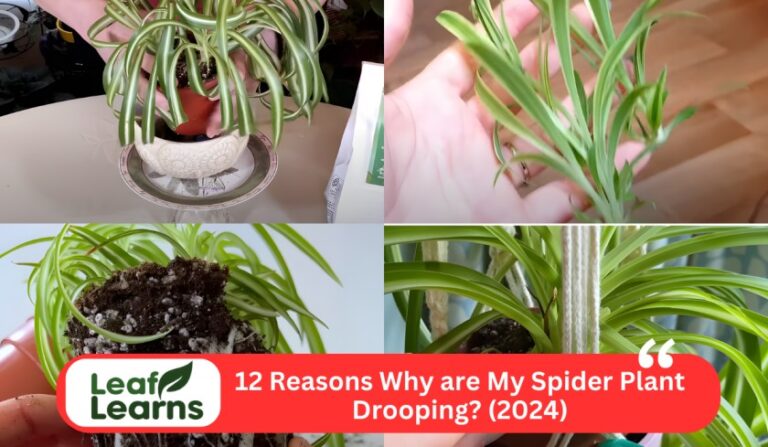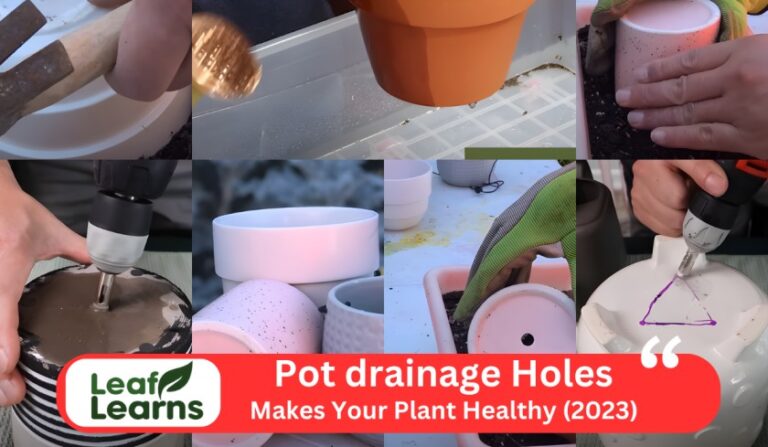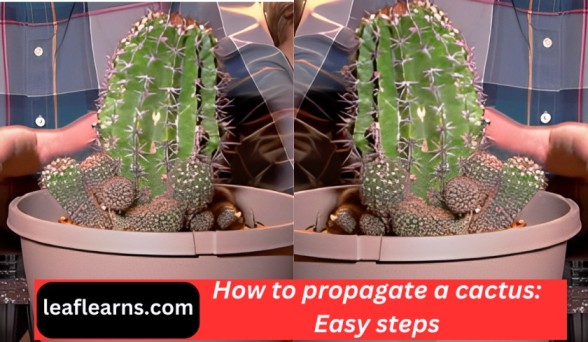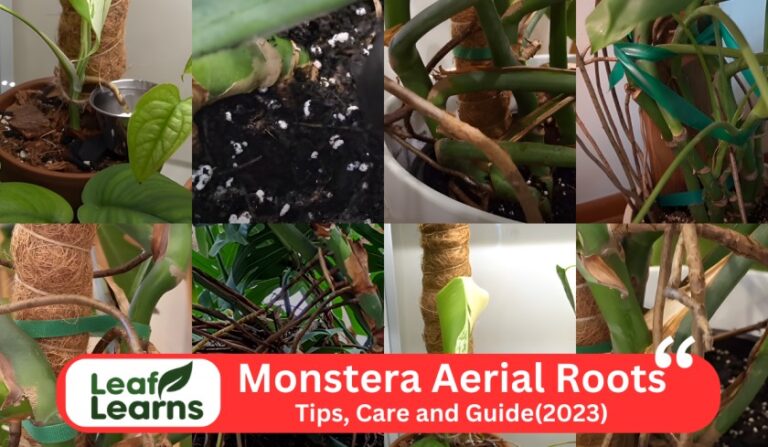Why Are My Hoya Leaves shriveling – Leaflearns (2024)
From the Hoya leaves shriveling you can tell that it is either stress to a situation or underwatering of the plants. These can be a consequence of malwatering, high levels of exposure to the sun, or low atmospheric moisture as certain conditions decrease the humidity of your surrounding environment.

So, your personal space is going to become a warm place to enjoy once you have ensured proper watering, the optimal humidity level, and altered the light source to a suited value.
You will be able to see the moisture level of the soil and then make changes to the care of the plants if needed, thus preventing the dead leaves.
Contents
Delving into the Depths: Why Do Hoya Leaves Shriveling?
Several factors can trigger leaf shriveling in your Hoya, from thirsty roots to environmental imbalances. Here are the top suspects:
Underwatering
Despite the fact that hoyas are known to resist dryness, even drought-tolerant plants need to be given water.
The leaves droop and wrinkle as a result of regular submersion, which drains their water reserves.
Insert your finger two inches into the soil to determine its moisture content before watering. If your Hoya feels dry, you must moisturize it. So the is cause of Hoya Leaves shriveling.
Overwatering
Underwatering is a common occurrence, while overwatering can occasionally pose problems. Soggy soil prevents oxygen from reaching the roots, which leads to root rot.
This prevents the leaves from absorbing water, which causes shriveling and turgor loss. Ascertain that the pot has holes for drainage and limit the amount of water left standing.
Water deeply but sparingly, allowing the soil to almost completely dry out between treatments. So the is also cause of Hoya Leaves shriveling.
Low Humidity
Hoyas are indigenous to tropical climates with high amounts of humidity.
The loss of moisture in leaves due to dry air can cause them to shrink or even fall off. To raise the humidity around your Hoya, you can use a pebble tray, a humidifier, or grouping plants together.
Root Issues
Root rot, caused by overwatering or incorrect drainage, weakens the plant’s ability to absorb water and nutrients. Look for mushy, brown roots, and move the plant into fresh soil that drains well if necessary.
Light Stress
Hoyas prefer bright, indirect light, but excessive sun exposure can cause them to burn and dry out. Adjust the light’s brightness or relocate your Hoya to a more advantageous spot.
Pests and Diseases
Occasionally, pests like mealybugs and spider mites can sap leaves, causing them to shrink and wither. Similarly, fungal diseases can cause leaves to become shriveled and undergo color changes.
Natural Leaf Cycle
Remember that Hoyas shed their older leaves as they grow. This might be a typical stage of the cycle if there are only a few of the older leaves that are fading and falling off.
However, excessive leaf loss, particularly on younger leaves, might indicate problems. So this is the main causes of Hoya Leaves shriveling.
Diagnosing the Culprit: Clues from Your Hoya
The key to effective intervention lies in observing your Hoya closely. Consider these additional factors:
- Shriveling Rate: Slow shrivelling often indicates underwatering, but fast shrivelling may indicate overwatering or root disease.
- Leaf Texture: Crisp, dry leaves are often a sign of underwatering or low humidity. Soft, mushy leaves might indicate a root infection.
- For a more comprehensive picture, look for additional symptoms including yellowing leaves, leaf drop, or stem damage.
Restoring Your Hoya’s Radiance: Treatment Options
Once you’ve identified the culprit, tailor your treatment accordingly:
- Watering: Ensure that you give your Hoya enough water until the drainage holes are totally dry. Allow the soil to dry out a little before giving it another irrigation.
- Overwatering: The moment you stop watering, let the soil dry completely. Consider repotting in fresh, well-draining soil if root rot is found.
- Low Humidity: Use the previously listed techniques to raise the humidity.
- Root Problems: To prevent root rot, repot in fresh soil that drains properly and trim off any damaged roots. Apply a fungicide if necessary.
- Light Stress: Take your Hoya to a place where the lighting is better.
- Diseases and Pests: For disease treatment, apply the appropriate fungicides; for pest treatment, use neem oil or insecticidal soap.
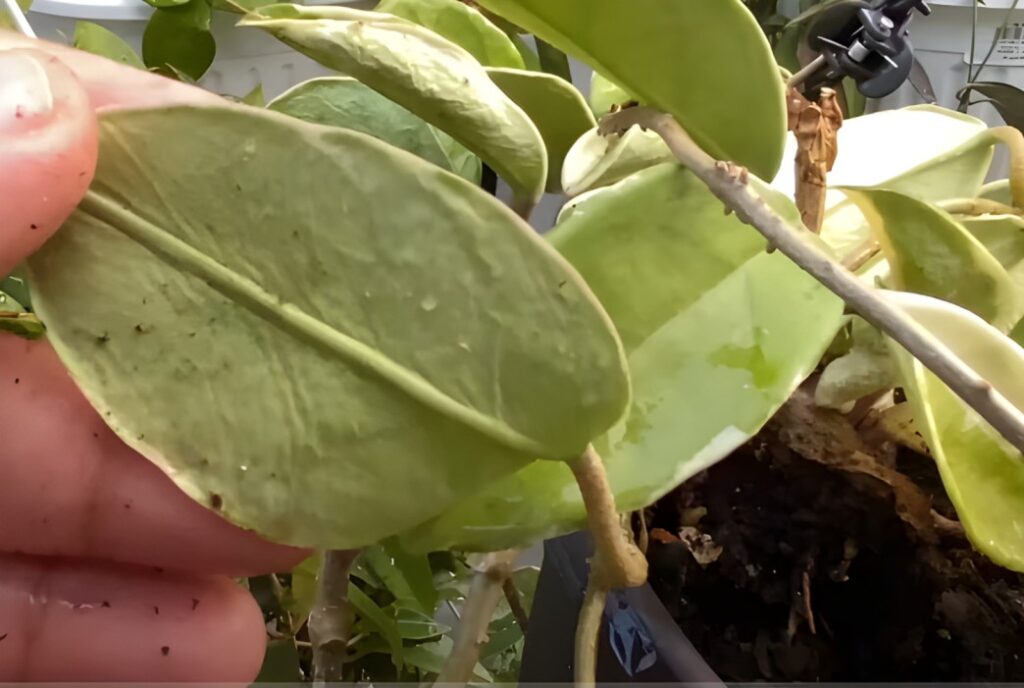
Preventative Measures: Cultivating a Thriving Hoya
By following these tips, you can prevent leaf shriveling from becoming a recurring concern:
- Water wisely: Avoid going under and overboard at the same time. Acknowledge your Hoya’s specific needs for watering and stick to a regimen.
- Verify that there is enough drainage. Verify that your pot has drainage holes and that the potting mix drains correctly.
- Sustain the proper humidity: Group your plants, use a pebble tray, or place your Hoya in a humid area.
- Provide filtered light from the sun: As an alternative, use brilliant indirect lighting to avoid the harsh midday sun.
- Exercise caution when applying fertilizer as an excessive amount might damage roots and exacerbate leaf issues.
Hoya enthusiasts often encounter issues with their plants, particularly concerning care and maintenance. Questions like “why are my hoya leaves shriveling” or “why are my hoya leaves turning yellow” frequently arise, prompting concerns about the plant’s health and vitality.
Understanding the specific variety of hoya, such as hoya kerrii splash or hoya queen, can provide insight into its unique needs and behaviors.
For those looking to expand their collection, questions about propagation and growth, like “Can you propagate hoya leaves” or “do hoya leaves grow back,” become pertinent. However, challenges such as leaves drying out or curling up due to environmental factors like overwatering necessitate careful attention and intervention.
Despite the intricacies of hoya care, the community also shares lighter moments, such as discussions about the aroma of certain varieties or the number of leaves, like 5 leaves moers or 7 leaves aroma, adding a touch of whimsy to the hobby.
FAQs
Why are my hoya leaves wrinkling?
Wrinkled Hoya leaves can be caused by several factors, most commonly:
- The most likely reason is underwatering, which causes the leaves of the plant to absorb water and lose some of their plumpness.
- Overwatering: Water absorption is hindered and the plant is forced to rely on water stored in its leaves when roots are smothered by moist soil.
- Issues with the roots: The roots shrivel because they are unable to perform their role due to compaction, overwatering, or insect damage.
- low relative humidity The leaves lose moisture when exposed to dry air, appearing withered and weaker.
- Light stress: Excessive light may burn leaves, while little light weakens them and increases their susceptibility to shrivelling.
How can I revive my hoya plant?
- For a resurrection to be effective, the reason must be identified. Examine the soil’s moisture content, look for any symptoms of rot in the roots, measure the humidity, and note any sun exposure.
- Immerse the area fully until the drainage openings are no longer visible. Allow the soil to dry out a little before giving it another irrigation.
- Overwatering: Stop watering, allow soil to dry completely, and then repot in well-draining soil using a drainage-hole-equipped container. If necessary, take care of the root rot.
- Root issues: Take out any damaged roots and plant again in fresh soil that drains properly. Use a fungicide on the remaining roots if necessary.
- Low humidity: To increase the humidity, put plants together, use a humidifier, or use a pebble tray.
How often should you water a hoya?
Hoyas prefer to get somewhat dry between irrigation. The exact frequency varies depending on the kind of soil, climate, and size of pot. As a finger test, try putting your finger two to three inches into the earth. Just add water if it feels dry to the touch.


